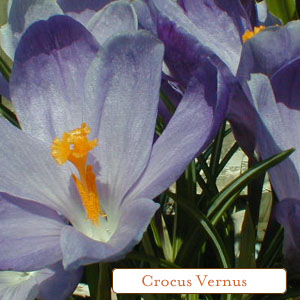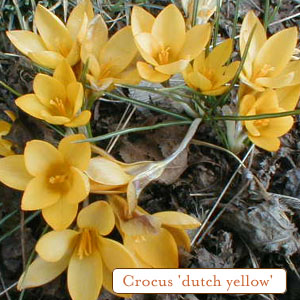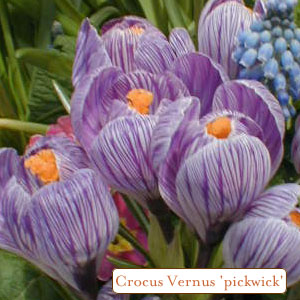Guest post by Beate Schwirtlich
More than any other, these tough and lovely plants signal the true ending of winter. They couldn’t be hardier, surviving frost and late snowfalls, unwiltingly waiting to open on a sunny day. But you’d never know it to look at their delicate blooms. These are no hothouse beauties. That’s why I’m so fond of them. They are not glamorous, not demanding. And they are everywhere. I don’t have any in my own garden, not yet. I just enjoy everyone elses.
Crocus is Greek for “Saffron”
Soil: Well drained soil
Light: Full or part sun
Plant: 1 inch apart, 5 inches deep
Perhaps less familiar to admirers of the crocus are the varieties that bloom in fall. Crocus Sativa is best known among these–this variety may even be considered glam. The stigmas of this crocus (three on each bloom), when harvested and dried, make the most expensive of spices, saffron.
A member of the iris family, the crocus is native to Southern Europe and Asia. Representations of this flower have been found on Egyptian heiroglyphs, frescoes, tablets and pottery excavated on the island of Crete, artifacts that date back to 1600 BC. The earliest documented gardens of the West, those of Egyptians, Greeks, and the Minoans of Crete (2100-1600 BC) all grew the crocus. The plant was native to the area, but was incorporated into the earliest gardens, which existed at that time as an extension of agriculture. It’s the valuable and useful Crocus Sativa that gets much of the attention of historians.
You don’t need too much expertise to grow these beauties. They thrive any place where winter is followed by spring, and can even be planted right in the lawn. If you choose to do this, let your grass grow uncut for a full six weeks after flowering. Don’t chop off that foliage–the plants need those six weeks to photosynthesize and store energy for the next year’s blooms.
Suggestions:
- Crocus tommasinianus is a nice purple colour. It flowers a lot and, like the Dutch crocus, spreads by itself.
- The Dutch Crocus (Crocus vernus) is a good choice for growing in your lawn. It readily self-propagates. It has larger flowers than any other type.
- Crocus Flavus, is yellow, and smaller than the Dutch.
There are over a hundred varieties of this bulb. Get your hands on some, and give them a try.


